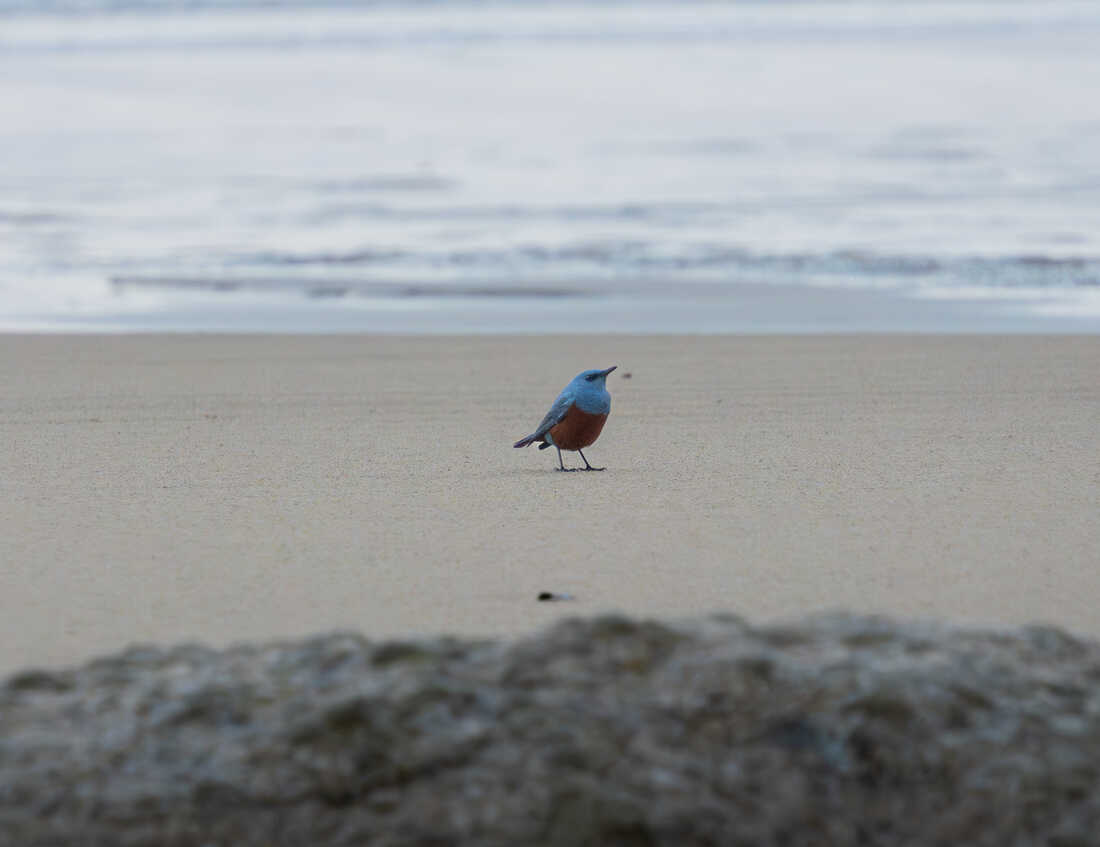Animals
Hobbyist photographer snaps photo of extremely rare bird in 1st U.S. sighting
When hobbyist photographer Michael Sanchez snapped this picture of a blue rock-thrush subspecies on the coast of northern Oregon last week, he didn’t know how rare the bird was until he posted it to social media.
Michael Sanchez
hide caption
toggle caption
Michael Sanchez
When hobbyist photographer Michael Sanchez snapped this picture of a blue rock-thrush subspecies on the coast of northern Oregon last week, he didn’t know how rare the bird was until he posted it to social media.
Michael Sanchez
Call it beginner’s luck.
On a trip to the Oregon coast in late April, amateur photographer Michael Sanchez took his new camera out to Hug Point State Park to snap pictures of waterfalls.
Sanchez, a 41-year-old middle-school band director from Vancouver, Wash., recently picked up photography and, by his account, is by no means a bird-watcher. But his trip turned into an impromptu photo shoot that made him the envy of birders.
“I got all the shots that I needed and when I was finishing up, I looked behind me and, still before the sun’s fully up, I see this little bird with black feathers. I said, ‘Oh, well, what a cute little bird, why don’t I practice shooting that bird?” Sanchez, 41, told NPR on Thursday. “When I got home, I started to process the pictures from my trip and I saw that it wasn’t a little black bird — it was actually a beautifully colored blue and a chestnut bird.”
It wasn’t until he posted his pictures to Facebook that he learned his bird sighting was extremely rare: a blue rock-thrush, far from its native breeding habitat in parts of Europe, Africa and Asia.
His April 21 sighting is the first time the bird has been seen in the U.S, bird experts said. It’s also the first blue rock-thrush sighting in North America since 1997, according to the American Birding Association, when the species was spotted in British Columbia. The prior sighting had been rejected by the ABA over debate about how the bird had arrived in the area; however, the Oregon sighting may prompt the association to reevaluate its 1997 record.
Brodie Cass Talbott, an educator with the Bird Alliance of Oregon, was stunned by the finding after his team verified the sighting. He said the male bird is the Southeast Asian philippensis subspecies — the only one of five with a reddish-brown belly.
“It was just a real shock,” he said. “This is potentially the rarest bird that’s ever been seen in Oregon.”
Oregon isn’t usually a stopping ground for vagrants, a term for birds that travel well beyond their normal breeding or wintering locations, he said — especially those traveling from Asia like this one.
Alaska likely would’ve been the quickest destination for this particular bird, which his team believes migrated from just north of Japan.
“They’re usually going to come across the Bering Sea, from Russia to Alaska and then make their way south,” he said. “So, that’s a really, really broad ocean that this bird would need to cross.”
Among birders and ornithologists, the unusual sighting has invited theories about this bird’s origins.
Talbott doubted that the bird made it all the way across the Pacific Ocean on its own two wings.
“What seems more likely is — especially since it is in the heart of migration season for this species in Asia — that this bird may have gotten blown off course during migration,” he said.
A storm could have whisked the bird toward the ocean, or it could have hopped a ride on a cargo ship, or maybe a combination of the two, he conjectured.
Just a few days later, another blue rock-thrush sighting occurred further down the Pacific coast, deepening the intrigue. About 500 miles away from the Oregon site, the same subspecies was photographed by researchers on Southeast Farallon Island off the coast of San Francisco.
It’s unclear whether this is the same bird or a second bird, the ABA said, adding that “both scenarios seem about equally likely.”
“Both possibilities are so rare that it’s really hard to know,” Talbott said.
He speculated that it was the same bird, blown south by a recent wind recorded in the region, while trying to get back home.
As for hobbyist photographer Sanchez, the buzz around his early work has inspired him to expand his focus.
“I have more of an interest in photographing birds now,” he said. “I don’t imagine I’ll ever get something like that again. But, you know, it does help me to notice birds a little bit more.”
